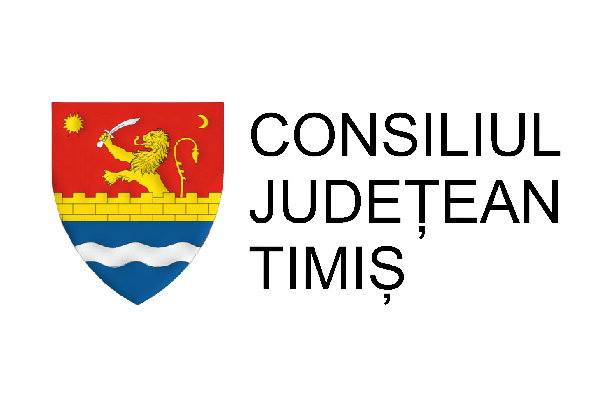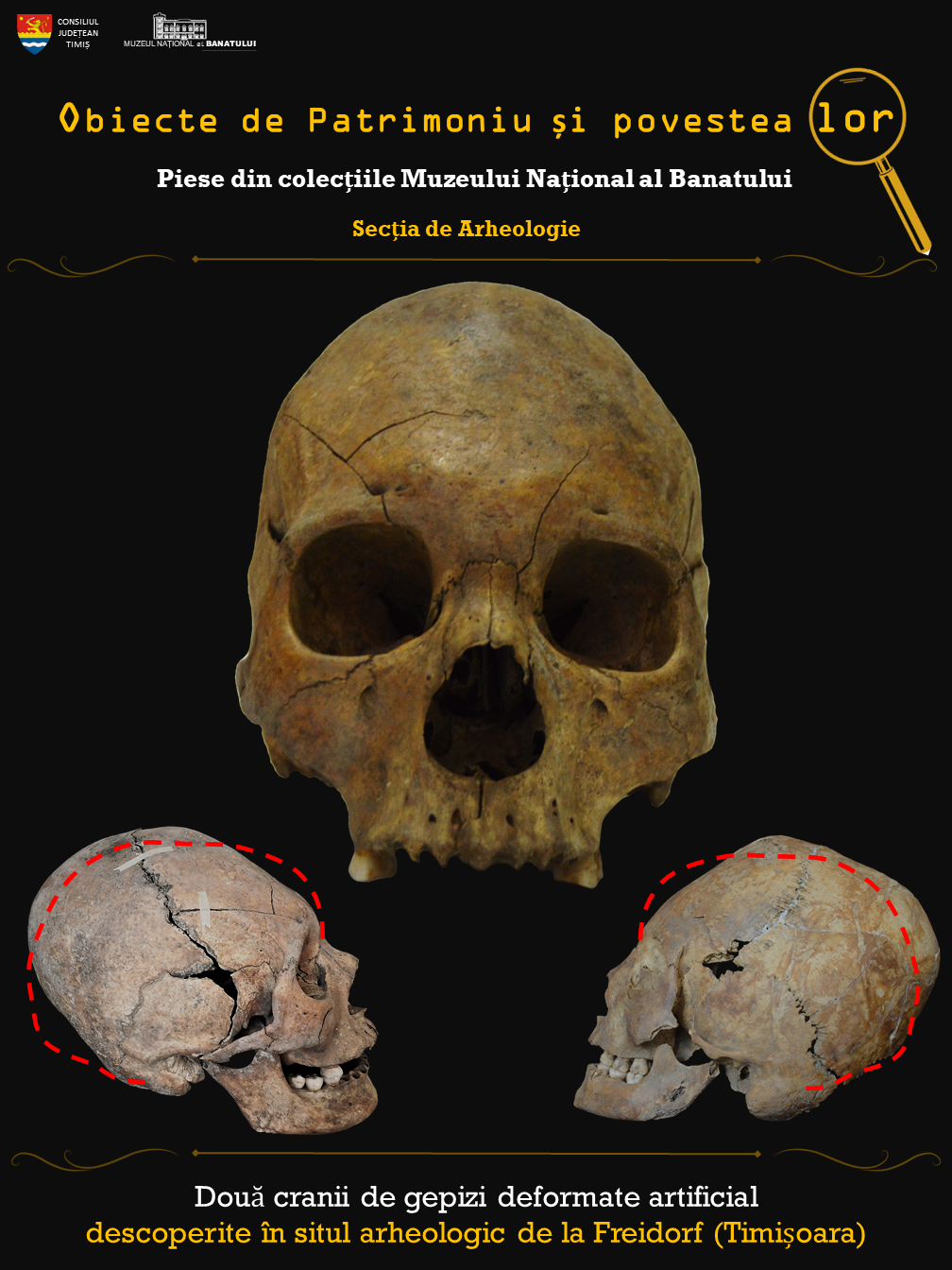Two artificially deformed skulls, discovered in the archeological site of Freidorf (Timișoara)
Artificial cranial deformity is a habit that is difficult to understand in the current social context, but which has been practiced around the globe for a long time in human history, being described on all continents and dating from prehistory to the present. It is not a characteristic characteristic only of our species, being also discovered in the Neanderthal man from the Shanidar cave (Iraq), who lived about 45,000 years ago.
Reasons for intentional distortion of head shape, as a socio-cultural practice, include ethnic identification, increasing social position within a group, or maintaining beauty standards. As a cosmetic trait, it was practiced both for beauty and for intimidating in battle, the Huns being the best known example of the ancient people who applied artificial cranial deformation to get a sharper look of future warriors, who thus become more terrifying in battle.
Intentional cranial deformity is obtained by various methods applied to children, who have soft and elastic cranial bones. The methods are applied from a few days after birth, up to a few months and even up to 3-5 years, depending on the desired effect.
Cases found in Europe often show a cranial deformity caused by the application of compresses and bandages on the head, resulting in flattening of the forehead. Another popular shape is the conical look obtained with tight bandages, probably based on the belief that a longer skull offers more space for intellectual abilities and memory.
In Europe, this custom was predominantly practiced by the Gepidic, Hun, Sarmatian, Alanic and Gothic tribes, and during the migrations these tribes influenced other populations, but on the Romanian territory it was observed to be practiced only by migrant peoples, without being appropriated by the local ones.
In Romania, archaeologists have discovered several cases that show artificial cranial deformity, belonging predominantly to the Sarmatian, Hunic and Gepidic populations, but also from the early Roman-Byzantine and medieval medieval type of Dridu type.
In Timiș County, 2 cases were discovered in the Timișoara-Freidorf archeological site, presenting this practice, belonging to some gepis. The skull of a 6-7 year old child, who lived in the 5th century AD, was discovered in the archeological research campaign carried out in 2006, and in 2017 another case was discovered, this time present to a woman about 35-40 years old, who also lived in the 5th century AD. Both cases show a deformation made with bandages (annular type), the result being the elongation of the frontal bone and the flattening of the occipital.
Image explanation: center and left: female skull (35-40 years), right: child skull (6-7 years); the dotted red line roughly represents the normal shape of the skull.
Text, photos, design: Ionela Slejiuc
Selective Bibliography:
Simalcsik, A. (2015). “About intentional cranial deformity. reference to the discovery from Fîrlădeni (Causeni district) ”. Preventive Archeology in the Republic of Moldova, (2), 129-138.
Similacsik, A. (2018). “Intentional cranial deformity in Sarmatian communities.” Acta Musei Tudovensis, (14), 91-106.
Gal, S.S. (2011). “Timișoara – Freidorf osteological analysis of human remains”. MARISIA, Studies and Materials, Archeology, (31), 283–289.


